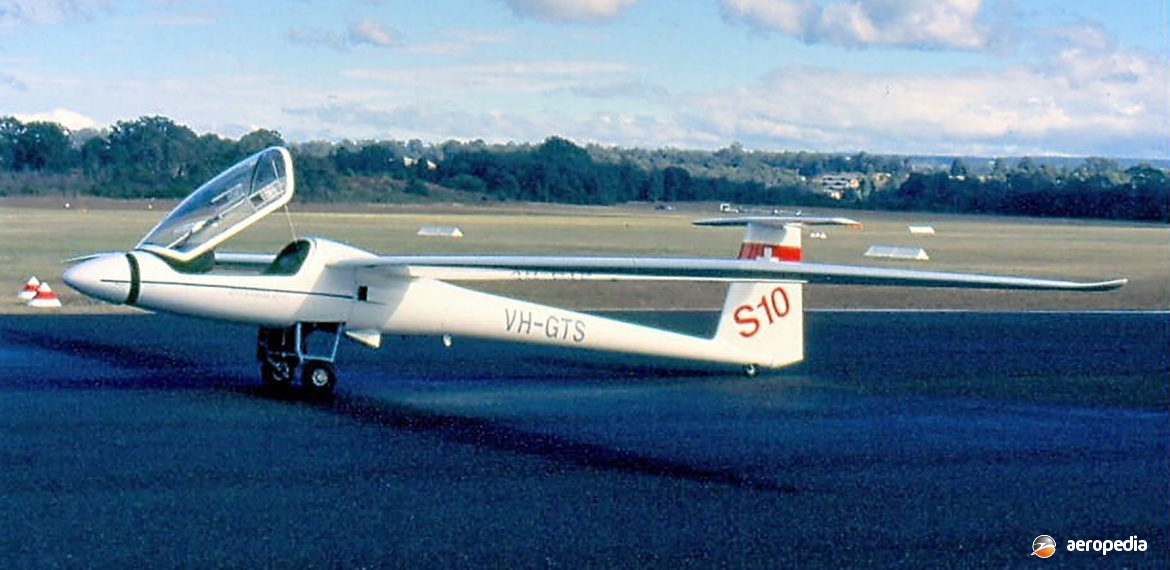Photograph:
Stemme S-10 VH-GTS (c/n 10-34) at Camden, NSW (David C Eyre)
Country of origin:
Germany
Description:
Two-seat high-performance self-launched glider
Power Plant:
One 69 kw (93 hp) Limbach four-cylinder horizontally-opposed air-cooled engine
Specifications:
- [With variable pitch propeller]
- Wingspan: 23 m (75 ft 5½ in)
- Length: 8.42 m (27 ft 7½ in)
- Height: 1.81 (5 ft 10¾ in)
- Wing area: 18.7 m² (201.3 sq ft)
- Cruising speed: 225 km/h (139 mph)
- Max speed at 3,048 m (10,000 ft): 259 km/h (161 mph)
- Stalling speed flaps down: 78 km/h (48 mph)
- Max rate of climb at sea level: 249 m/min (817 ft/min)
- Service ceiling: 9,140 m (30,000 ft)
- Max range with standard fuel (90 litres / 19.8 Imp gals fuel): 1,290 km (801 miles)
- Max range with optional fuel: 1,720 km (1,068 miles)
- Empty weight: 640 kg (1,411 lb)
- Loaded weight: 850 kg (1,874 lb)
History:
Stemme GmbH & Co of Strausberg, Germany was formed in 1985 (in Berlin) to develop high performance gliders. The prototype S-10 (D-KKST) was flown for the first time on 6 July 1986. A second prototype fitted with the definitive production wing was flown on 2 June 1987, and since then the aircraft has been produced in three variants: the S-10 basic model, the S-10V with a variable pitch propeller, and the SF-10VC surveillance/observation model with under-wing sensor pods for pollution control and resources investigation. More than 80 examples have been delivered to Austria, Belgium, Brazil, Canada, France, The Netherlands, South Africa, Spain, Switzerland, the United Kingdom, and the USA.
The S-10 series was unusual in that the engine was installed behind the cockpit and drove a folding two-blade propeller in the nose through an extension shaft via a Kevlar tunnel. Designed to JAR22, it was certificated in Germany, the UK and the USA. The wings were built in three sections from CFRP and were detachable from the fuselage. The CFRP rear fuselage and tail were mounted to a steel tube centre frame which accommodated the engine, undercarriage, and nose. Standard fuel was 90 litres (19.8 Imp gals) but optional tanks gave a capacity of 120 litres (26.4 Imp gals).
Two examples were imported to Australia in 1996 and these were registered under Gliding Federation Regulations. First of the type registered in New Zealand became ZK-GDC (c/n 10- 41). Further examples have since been imported, at least one being powered by a Rotax 914 turbocharged engine. Those registered include VH-GHC (c/n 11-054), VH-ZAX (c/n 10-54) and VH-ZVT (c/n 11-027).

